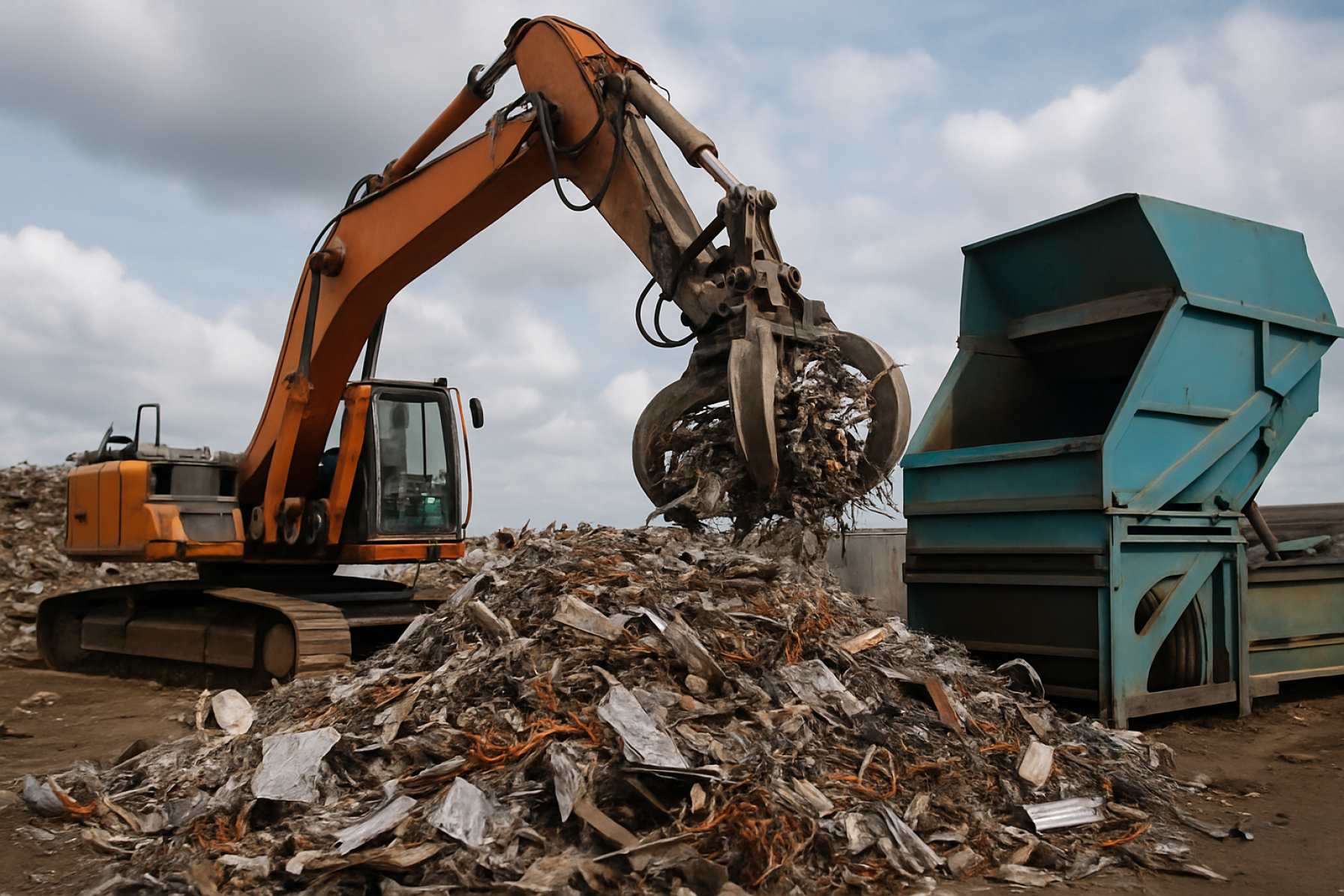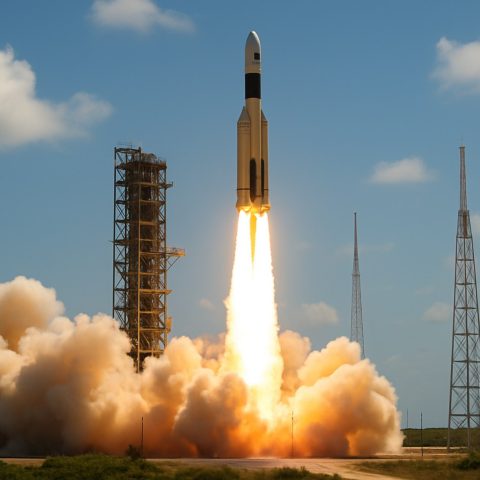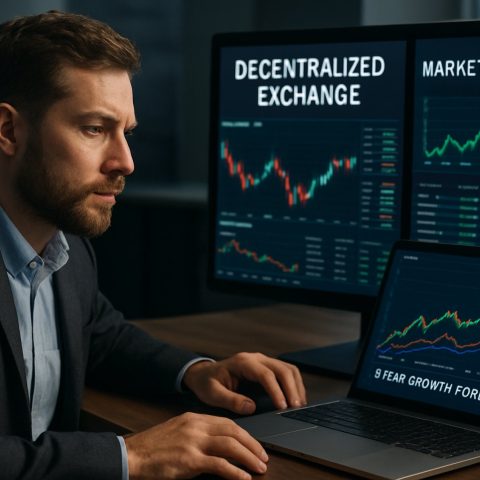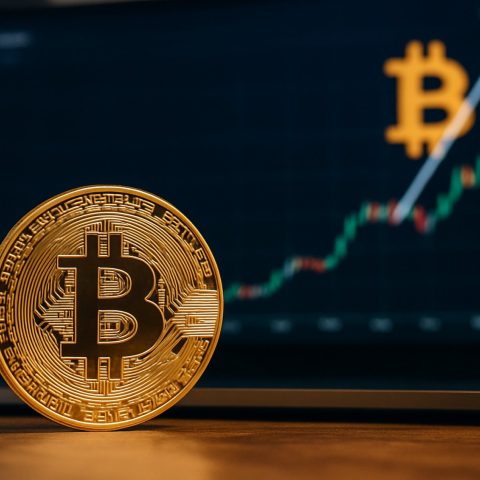Revolutionizing Non-Ferrous Metallurgical Waste Recycling in 2025: Advanced Technologies, Market Growth, and the Road to a Circular Economy. Explore how innovation is transforming waste into value and driving sustainability in the metals sector.
- Executive Summary: Key Trends and Market Drivers in 2025
- Global Market Size, Segmentation, and 2025–2030 Growth Forecasts
- Emerging Technologies in Non-Ferrous Metallurgical Waste Recycling
- Innovative Processes: Hydrometallurgy, Pyrometallurgy, and Bioleaching
- Major Players and Industry Initiatives (e.g., umicore.com, glencore.com, icmm.com)
- Regulatory Landscape and Environmental Compliance in 2025
- Supply Chain Integration and Circular Economy Strategies
- Investment, M&A, and Funding Trends in Recycling Technologies
- Challenges, Risks, and Barriers to Adoption
- Future Outlook: Market Opportunities and Strategic Recommendations
- Sources & References
Executive Summary: Key Trends and Market Drivers in 2025
The non-ferrous metallurgical waste recycling sector is undergoing significant transformation in 2025, driven by tightening environmental regulations, resource scarcity, and the accelerating global shift toward circular economy models. Non-ferrous metals—such as aluminum, copper, zinc, nickel, and lead—are critical for industries ranging from electronics to renewable energy. As demand for these metals rises, so does the imperative to recover valuable materials from industrial waste streams, including slags, dusts, sludges, and spent catalysts.
A key trend in 2025 is the rapid adoption of advanced hydrometallurgical and pyrometallurgical recycling technologies. Hydrometallurgical processes, which use aqueous chemistry to extract metals, are gaining traction due to their lower energy requirements and ability to selectively recover metals from complex waste. Major industry players such as Umicore and Boliden are investing in closed-loop systems that maximize recovery rates and minimize environmental impact. Pyrometallurgical methods, including high-efficiency smelting and plasma-based technologies, remain essential for processing certain waste types, with companies like Glencore operating large-scale facilities that integrate both primary and secondary (recycled) feedstocks.
Digitalization and automation are also reshaping the sector. Real-time process monitoring, AI-driven sorting, and robotics are being deployed to improve material separation and reduce losses. For example, Aurubis, one of Europe’s largest copper recyclers, is expanding its use of digital twins and sensor-based sorting to optimize throughput and purity in its recycling operations.
Policy and regulatory frameworks are a major market driver in 2025. The European Union’s Green Deal and Circular Economy Action Plan, as well as China’s “dual carbon” goals, are compelling producers to increase recycled content and reduce landfill disposal. This is prompting investments in new recycling capacity and partnerships across the value chain. In North America, the U.S. Department of Energy is supporting R&D for critical mineral recovery from metallurgical wastes, further stimulating innovation.
Looking ahead, the outlook for non-ferrous metallurgical waste recycling technologies is robust. Industry forecasts anticipate continued growth in recycling rates, with a focus on recovering minor and critical metals such as cobalt, lithium, and rare earths from increasingly complex waste streams. Companies with integrated, flexible recycling platforms—such as Umicore and Aurubis—are well positioned to lead the market, while ongoing R&D and regulatory support are expected to drive further technological advances and market expansion through the remainder of the decade.
Global Market Size, Segmentation, and 2025–2030 Growth Forecasts
The global market for non-ferrous metallurgical waste recycling technologies is experiencing robust growth, driven by increasing demand for resource efficiency, regulatory pressures, and the rising value of critical metals. As of 2025, the market is characterized by a diverse range of technologies targeting the recovery of metals such as aluminum, copper, zinc, nickel, and rare earth elements from industrial by-products, slags, dusts, and spent catalysts. The sector is segmented by metal type, waste source, recycling process, and end-use industry, with each segment exhibiting distinct growth dynamics.
Aluminum recycling remains the largest segment, supported by the metal’s high recyclability and the significant energy savings compared to primary production. Major industry players such as Novelis and Norsk Hydro have expanded their recycling capacities in Europe, North America, and Asia, investing in advanced sorting, melting, and purification technologies. Copper and zinc recycling are also expanding, with companies like Aurubis and Boliden operating integrated smelters that process a mix of primary and secondary raw materials, including electronic scrap and metallurgical residues.
The market is further segmented by waste source, including smelter slags, refinery dusts, spent batteries, and electronic waste. The proliferation of electric vehicles and renewable energy systems is driving demand for recycling of lithium-ion batteries and rare earth-containing components. Companies such as Umicore are at the forefront of battery recycling, employing hydrometallurgical and pyrometallurgical processes to recover cobalt, nickel, and lithium from end-of-life products.
From a regional perspective, Asia-Pacific leads in both capacity and technological innovation, propelled by China’s large-scale industrial base and government mandates for circular economy practices. Europe follows closely, with stringent environmental regulations and ambitious recycling targets under the European Green Deal. North America is witnessing renewed investment in recycling infrastructure, particularly in response to supply chain concerns for critical minerals.
Looking ahead to 2030, the global market for non-ferrous metallurgical waste recycling technologies is projected to grow at a compound annual growth rate (CAGR) in the high single digits, with total market value expected to surpass several billion USD. Growth will be underpinned by continued urbanization, electrification trends, and the imperative to reduce carbon emissions. Technological advancements—such as sensor-based sorting, plasma smelting, and bioleaching—are anticipated to further improve recovery rates and economic viability, attracting new entrants and fostering strategic partnerships among established players like Glencore and Trafigura.
Emerging Technologies in Non-Ferrous Metallurgical Waste Recycling
The landscape of non-ferrous metallurgical waste recycling is undergoing rapid transformation in 2025, driven by both regulatory pressures and the imperative to secure critical raw materials. Non-ferrous metals such as aluminum, copper, nickel, zinc, and rare earth elements are essential for modern industries, but their extraction and processing generate significant waste streams, including slags, dusts, sludges, and spent catalysts. Emerging recycling technologies are increasingly focused on maximizing resource recovery, minimizing environmental impact, and enabling circular economy models.
Hydrometallurgical processes are gaining traction as a sustainable alternative to traditional pyrometallurgical methods. These processes use aqueous chemistry to selectively leach valuable metals from complex waste matrices, often at lower temperatures and with reduced emissions. In 2025, companies such as Umicore are advancing closed-loop hydrometallurgical systems for the recovery of precious and specialty metals from industrial residues and electronic scrap. Their operations emphasize high recovery rates and the minimization of secondary waste, aligning with European Union directives on waste reduction and resource efficiency.
Another significant trend is the integration of advanced sensor-based sorting and automated material characterization. Technologies such as X-ray fluorescence (XRF) and laser-induced breakdown spectroscopy (LIBS) are being deployed at scale to improve the separation of non-ferrous fractions from mixed waste streams. TOMRA, a global leader in sensor-based sorting, has expanded its portfolio to include systems specifically designed for non-ferrous scrap, enabling higher purity outputs and improved downstream processing efficiency.
Thermal treatment innovations are also emerging, particularly for the treatment of metallurgical slags and dusts. Plasma arc technology, for example, is being piloted to recover metals from hazardous residues while simultaneously stabilizing toxic components. Companies like Metso Outotec are developing modular plasma and smelting solutions that can be tailored to specific waste streams, offering flexibility and scalability for recyclers facing increasingly diverse input materials.
Looking ahead, the next few years are expected to see further commercialization of bioleaching and electrochemical recovery methods. These approaches, which utilize microorganisms or electrochemical cells to extract metals, promise lower energy consumption and reduced chemical usage. Industry bodies such as the International Aluminium Institute are actively promoting research collaborations to accelerate the adoption of these technologies, recognizing their potential to address both supply chain resilience and environmental stewardship.
Overall, the convergence of digitalization, process intensification, and sustainability imperatives is shaping a dynamic outlook for non-ferrous metallurgical waste recycling technologies through 2025 and beyond.
Innovative Processes: Hydrometallurgy, Pyrometallurgy, and Bioleaching
The recycling of non-ferrous metallurgical waste is undergoing significant transformation in 2025, driven by the adoption of innovative processes such as hydrometallurgy, pyrometallurgy, and bioleaching. These technologies are crucial for recovering valuable metals like copper, nickel, zinc, and rare earth elements from industrial residues, electronic scrap, and spent catalysts, aligning with global sustainability and resource efficiency goals.
Hydrometallurgical processes, which use aqueous solutions to extract metals, are gaining traction due to their selectivity and lower energy requirements compared to traditional smelting. In 2025, major industry players such as Boliden and Umicore are expanding their hydrometallurgical operations to process complex waste streams, including electronic waste and battery scrap. These companies employ advanced solvent extraction and ion exchange techniques to recover high-purity metals, reducing landfill disposal and environmental impact. For example, Umicore operates one of the world’s largest precious metals recycling facilities, utilizing hydrometallurgical steps to recover gold, silver, and platinum group metals from end-of-life products.
Pyrometallurgy remains a cornerstone for recycling non-ferrous waste, especially for materials with high metal content or those difficult to treat hydrometallurgically. Companies like Aurubis and Glencore are investing in state-of-the-art smelting and refining technologies to improve metal yields and energy efficiency. In 2025, Aurubis is advancing its multi-metal recycling capabilities, processing a wide range of secondary raw materials, including copper scrap, electronic waste, and industrial residues. These pyrometallurgical processes are increasingly integrated with off-gas cleaning and slag valorization systems, minimizing emissions and maximizing resource recovery.
Bioleaching, the use of microorganisms to extract metals from waste, is emerging as a promising technology for low-grade and complex residues. While still in the early stages of industrial adoption, companies such as Boliden are piloting bioleaching for the recovery of copper and zinc from tailings and smelter dust. This approach offers lower energy consumption and reduced chemical usage, making it attractive for sustainable waste management. Ongoing research and pilot projects in 2025 are expected to accelerate the commercialization of bioleaching, particularly for the recovery of critical and rare metals.
Looking ahead, the integration of these innovative processes is set to enhance the circularity of non-ferrous metals, reduce environmental liabilities, and support the growing demand for secondary raw materials in the energy transition and digital economy. Industry leaders are expected to continue investing in process optimization, digitalization, and collaboration with technology providers to further improve the efficiency and scalability of non-ferrous metallurgical waste recycling.
Major Players and Industry Initiatives (e.g., umicore.com, glencore.com, icmm.com)
The non-ferrous metallurgical waste recycling sector is experiencing significant transformation in 2025, driven by regulatory pressures, resource scarcity, and the global push for circular economy models. Major industry players are investing in advanced recycling technologies to recover valuable metals such as copper, nickel, zinc, and precious metals from industrial by-products, electronic scrap, and spent catalysts.
A leading force in this domain is Umicore, a Belgium-based materials technology company. Umicore operates one of the world’s largest and most advanced precious metals recycling facilities, processing a wide range of non-ferrous waste streams, including electronic scrap and industrial residues. In 2025, Umicore continues to expand its closed-loop recycling capabilities, focusing on hydrometallurgical and pyrometallurgical processes that maximize metal recovery while minimizing environmental impact. The company’s commitment to sustainable sourcing and recycling is central to its strategy, with ongoing investments in R&D to improve process efficiency and broaden the range of recoverable materials.
Another major player, Glencore, is a global diversified natural resources company with significant operations in non-ferrous metal recycling. Glencore’s recycling business processes a variety of secondary materials, including copper and nickel-bearing scrap, batteries, and electronic waste. In 2025, Glencore is scaling up its recycling infrastructure, particularly in Europe and North America, to meet growing demand for recycled metals in the energy transition and electric vehicle sectors. The company leverages both smelting and refining technologies to extract metals from complex waste streams, supporting its broader sustainability and decarbonization goals.
Industry-wide collaboration is also evident through organizations such as the International Council on Mining and Metals (ICMM), which brings together leading mining and metals companies to promote responsible production and recycling practices. In 2025, ICMM members are increasingly adopting best-in-class recycling technologies and sharing knowledge to reduce waste, lower carbon emissions, and enhance resource efficiency across the non-ferrous metals value chain.
Looking ahead, the outlook for non-ferrous metallurgical waste recycling technologies is robust. Major players are expected to further invest in digitalization, process automation, and advanced sorting technologies to improve recovery rates and economic viability. Strategic partnerships between recyclers, manufacturers, and technology providers are likely to accelerate innovation and scale, positioning the sector as a key enabler of the circular economy in the coming years.
Regulatory Landscape and Environmental Compliance in 2025
The regulatory landscape for non-ferrous metallurgical waste recycling technologies in 2025 is characterized by increasingly stringent environmental standards and a global push toward circular economy principles. Governments and international bodies are intensifying efforts to minimize landfill disposal, reduce hazardous emissions, and promote resource recovery from industrial by-products such as slags, dusts, and spent catalysts generated by the production of aluminum, copper, zinc, nickel, and other non-ferrous metals.
In the European Union, the Waste Framework Directive and the Circular Economy Action Plan continue to drive regulatory compliance, mandating higher recycling rates and stricter controls on hazardous waste. The EU’s revised European Steel Association (EUROFER) guidelines, while focused on steel, have influenced non-ferrous sectors by setting benchmarks for best available techniques (BAT) and emissions limits. The EU’s End-of-Waste criteria for certain metal fractions are expected to be updated in 2025, further clarifying when recycled materials can re-enter the market as products rather than waste.
In the United States, the Environmental Protection Agency (EPA) enforces the Resource Conservation and Recovery Act (RCRA), which classifies and regulates hazardous non-ferrous metallurgical wastes. The EPA is anticipated to finalize new rules in 2025 that will tighten leachate and air emission standards for secondary smelting and refining operations, directly impacting facilities that process aluminum dross, copper smelter dust, and similar residues. Companies such as Alcoa Corporation and Freeport-McMoRan are actively adapting their waste management and recycling processes to meet these evolving requirements.
China, the world’s largest producer and recycler of non-ferrous metals, continues to implement its “Zero Waste City” initiative, which includes strict quotas on industrial waste disposal and incentives for advanced recycling technologies. The Ministry of Ecology and Environment is expected to release updated technical standards for non-ferrous waste recycling in 2025, focusing on traceability, pollution control, and resource efficiency. Leading Chinese firms such as Aluminum Corporation of China (CHALCO) and China Molybdenum Co., Ltd. (CMOC) are investing in closed-loop recycling systems and advanced hydrometallurgical processes to comply with these regulations.
Globally, industry bodies like the International Aluminium Institute and the International Council on Mining and Metals are collaborating with regulators to harmonize standards and promote best practices. The outlook for 2025 and beyond suggests that compliance will increasingly require digital traceability, real-time emissions monitoring, and the adoption of innovative recycling technologies, with regulatory frameworks evolving to support both environmental protection and resource security.
Supply Chain Integration and Circular Economy Strategies
The integration of supply chains and the adoption of circular economy strategies are rapidly transforming the landscape of non-ferrous metallurgical waste recycling technologies in 2025 and are expected to drive significant advancements in the coming years. Non-ferrous metals such as aluminum, copper, zinc, and nickel are critical to various industries, and their recycling is essential for resource efficiency, environmental sustainability, and supply security.
Leading global producers and recyclers are increasingly embedding circularity into their operations. For example, Norsk Hydro, a major aluminum producer, has expanded its use of post-consumer scrap and invested in advanced sorting and melting technologies to increase recycled content in its products. The company’s Hydro CIRCAL line, which uses a minimum of 75% recycled post-consumer scrap, exemplifies the shift toward closed-loop supply chains and reduced carbon footprints.
Similarly, Aurubis, one of the world’s largest copper recyclers, has integrated multi-metal recycling facilities that process a wide range of complex waste streams, including electronic scrap and industrial residues. Their Hamburg and Lünen sites in Germany are at the forefront of recovering copper, precious metals, and other valuable elements from secondary sources, supporting both supply chain resilience and environmental goals.
In the zinc sector, Nyrstar operates advanced recycling plants that recover zinc from steel industry dust and other secondary materials, contributing to a more circular supply chain. The company’s facilities in Europe and the US are designed to process increasing volumes of non-ferrous waste, aligning with regulatory pressures and market demand for sustainable materials.
The integration of digital technologies is also enhancing traceability and efficiency in non-ferrous recycling. Companies are deploying blockchain, AI-driven sorting, and real-time data analytics to optimize material flows and ensure compliance with evolving regulations. These innovations are expected to become standard practice by 2027, further strengthening the circular economy model.
Looking ahead, the European Union’s Green Deal and similar policy frameworks in Asia and North America are accelerating investments in recycling infrastructure and supply chain integration. Industry collaborations, such as those led by the International Aluminium Institute, are fostering best practices and harmonizing standards across borders.
Overall, the next few years will see non-ferrous metallurgical waste recycling technologies become increasingly sophisticated, with supply chain integration and circular economy strategies at the core of industry transformation. This will not only reduce environmental impacts but also enhance the security and sustainability of critical material supplies.
Investment, M&A, and Funding Trends in Recycling Technologies
The non-ferrous metallurgical waste recycling sector is experiencing a surge in investment, mergers and acquisitions (M&A), and funding activity as global demand for critical metals intensifies and regulatory pressures mount. In 2025, the focus is on scaling advanced recycling technologies for aluminum, copper, nickel, zinc, and increasingly, battery metals such as lithium and cobalt. This trend is driven by the need to secure supply chains for the energy transition and to meet ambitious circular economy targets.
Major industry players are actively expanding their recycling capabilities through both organic investment and strategic acquisitions. Aurubis, one of Europe’s largest copper producers and recyclers, continues to invest in its multi-metal recycling facilities, with recent capital allocation aimed at expanding e-scrap and complex material processing. Similarly, Umicore is channeling significant resources into its battery recycling operations, targeting the recovery of nickel, cobalt, and lithium from spent batteries, and has announced plans to scale up its hydrometallurgical recycling capacity in Europe.
In North America, Novelis, a global leader in aluminum rolling and recycling, is investing over $2.5 billion in new recycling and rolling facilities, with a focus on closed-loop systems for automotive and beverage can scrap. The company’s strategy includes partnerships and potential acquisitions to secure feedstock and expand its recycling footprint. Meanwhile, Glencore is leveraging its global network to integrate non-ferrous scrap processing, particularly in copper and nickel, and has entered joint ventures to develop new recycling technologies.
The battery recycling segment is attracting substantial venture capital and corporate funding, with startups and established firms racing to commercialize efficient processes for black mass recovery. Boliden is expanding its Rönnskär smelter’s capacity to process electronic waste, while also exploring partnerships for lithium-ion battery recycling. In Asia, companies like JX Nippon Mining & Metals are scaling up urban mining operations, investing in advanced sorting and hydrometallurgical technologies to recover valuable metals from industrial waste streams.
Looking ahead, the outlook for 2025 and beyond suggests continued consolidation as companies seek to secure access to secondary raw materials and proprietary recycling technologies. Strategic alliances, cross-sector partnerships, and public-private funding initiatives are expected to accelerate, particularly in regions with strong regulatory incentives for circularity and decarbonization. The sector’s investment momentum is likely to persist, underpinned by the dual imperatives of resource security and environmental stewardship.
Challenges, Risks, and Barriers to Adoption
The adoption of non-ferrous metallurgical waste recycling technologies in 2025 faces a complex array of challenges, risks, and barriers, despite growing regulatory and market pressures to improve resource efficiency and reduce environmental impact. One of the primary challenges is the technical complexity associated with processing diverse and often contaminated waste streams. Non-ferrous metallurgical wastes, such as slags, dusts, and spent catalysts, frequently contain a mix of valuable metals (e.g., copper, nickel, zinc) alongside hazardous substances, requiring advanced separation and purification technologies. The development and scaling of such technologies demand significant capital investment and specialized expertise, which can be prohibitive for smaller operators.
Another major barrier is the variability in waste composition, which complicates the standardization of recycling processes. For example, the chemical and physical properties of smelter slags or electronic scrap can differ widely depending on the source and upstream processing methods. This variability necessitates flexible and adaptable recycling systems, increasing operational costs and technical risk. Companies such as Umicore and Boliden, both recognized leaders in non-ferrous metals recycling, have invested heavily in R&D to address these issues, but the need for continuous process optimization remains a significant hurdle.
Regulatory uncertainty and inconsistent policy frameworks across regions also pose risks to technology adoption. While the European Union has implemented ambitious recycling targets and extended producer responsibility schemes, other regions lag behind in establishing clear guidelines or incentives for non-ferrous waste recycling. This patchwork of regulations can deter investment in new recycling infrastructure, as companies face uncertainty regarding long-term market conditions and compliance requirements.
Economic factors further complicate the landscape. The profitability of recycling operations is closely tied to volatile commodity prices for recovered metals. When primary metal prices fall, recycled materials may become less competitive, discouraging investment in advanced recycling technologies. Additionally, the high energy requirements of certain recycling processes, particularly for complex or low-grade wastes, can erode margins—especially in regions with elevated energy costs or carbon pricing mechanisms.
Finally, there are logistical and supply chain barriers. The collection, transportation, and pre-processing of non-ferrous metallurgical wastes require robust infrastructure and coordination among multiple stakeholders. In many regions, especially outside of Europe and East Asia, such infrastructure is underdeveloped, limiting the availability of feedstock for recycling facilities. Companies like Glencore and Aurubis have established global networks to secure supply, but smaller players often struggle to achieve the necessary scale.
Looking ahead, overcoming these challenges will require coordinated efforts among industry leaders, policymakers, and technology providers to develop standardized processes, harmonize regulations, and invest in infrastructure. Without such collaboration, the widespread adoption of advanced non-ferrous metallurgical waste recycling technologies may remain constrained in the near term.
Future Outlook: Market Opportunities and Strategic Recommendations
The future outlook for non-ferrous metallurgical waste recycling technologies in 2025 and the coming years is shaped by intensifying regulatory pressures, resource scarcity, and the global drive toward circular economy models. As demand for critical metals such as aluminum, copper, nickel, and rare earth elements continues to rise—driven by sectors like electric vehicles, renewable energy, and electronics—recycling technologies are positioned as both a necessity and a strategic opportunity.
Key industry players are scaling up investments in advanced recycling processes. For instance, Aurubis AG, one of Europe’s largest copper recyclers, is expanding its multi-metal recycling capacity, focusing on complex waste streams such as electronic scrap and industrial residues. The company’s recent projects emphasize hydrometallurgical and pyrometallurgical innovations to maximize metal recovery and minimize environmental impact. Similarly, Umicore is leveraging proprietary smelting and refining technologies to process a broad spectrum of non-ferrous waste, including spent batteries and industrial by-products, with a strong emphasis on closed-loop solutions.
In Asia, JX Nippon Mining & Metals is advancing recycling of copper and precious metals from electronic waste, integrating automated sorting and high-efficiency extraction technologies. The company’s strategic focus aligns with Japan’s national resource security policies and the broader regional push for sustainable materials management.
The outlook for 2025-2028 is marked by several trends:
- Technology Integration: Digitalization, AI-driven sorting, and sensor-based material identification are being adopted to improve recovery rates and process efficiency. Companies like TOMRA are supplying sensor-based sorting systems to recyclers, enabling more precise separation of non-ferrous fractions.
- Policy and Regulation: The European Union’s Green Deal and Critical Raw Materials Act are expected to further incentivize recycling investments and set higher recovery targets, directly impacting technology adoption rates among major recyclers.
- Strategic Partnerships: Collaborations between smelters, technology providers, and OEMs are accelerating. For example, Boliden partners with electronics manufacturers to secure feedstock and co-develop recycling solutions.
- Market Expansion: Emerging economies are investing in local recycling infrastructure to reduce import dependency and environmental liabilities, with support from global technology suppliers.
Strategically, companies are advised to invest in modular, scalable recycling technologies, pursue cross-sector partnerships, and prioritize R&D in process innovation. The competitive landscape will increasingly favor those able to demonstrate high recovery rates, low emissions, and traceable supply chains, positioning non-ferrous metallurgical waste recycling as a cornerstone of sustainable industrial growth.
Sources & References
- Umicore
- Boliden
- Aurubis
- Norsk Hydro
- Metso Outotec
- International Council on Mining and Metals (ICMM)
- European Steel Association (EUROFER)
- Alcoa Corporation
- Aluminum Corporation of China (CHALCO)
- China Molybdenum Co., Ltd. (CMOC)
- Nyrstar
- JX Nippon Mining & Metals







